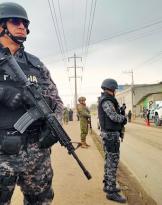On Monday, we had the opportunity to have an interview-interview with prof. Matteo Bassetti, Professor of Infectious Diseases of the University of Genoa, director of the Clinic for Infectious Diseases of the Policlinico San Martino Hospital of the Ligurian capital and president of the Italian Society of Anti-infectious Therapy (SITA).
In a country where public opinion in recent months has been hanging on the lips of graduates in economics, hygiene and even veterinary medicine to find out and get an opinion on the coronavirus crisis, It seemed serious to say the least to go to an infectious disease specialist, one of the most authoritative in our country. The result was an interview which, to be more usable, was divided into two parts: the second will be published tomorrow and, believe me, it is even more important than today.
Professor, in a recent interview, which had a wide international echo, said that COVID-19 in March was a "death-bearing" tiger, today it is a wild cat and sometimes even domesticated. Could you explain what happened and how did this "tiger" kill so much when she was a murderer?
What has changed is the presentation of the sick: today they are completely different than what we had in March and April.
Why it happened has various explanations: some think that it is linked to a lower viral load and it has been somehow shown that there is less virus in the respiratory tract. Someone else speaks of benign mutations, that is, the virus would have lost some of the characteristics of aggression. Still someone else says it's because it somehow downed most of the frail people in the beginning. It is evident that, regardless of these three or four reasons, the final result is that today we have a very different disease from the one in March: we are faced with people who arrive at the hospital with much milder symptoms than they were then.
In March, 10% of patients who arrived at the hospital often quickly ended up in resuscitation, they had immediately need oxygen, they had pneumonia that did a lot of damage. Today, even in the same typology of people, that is people over the years, these forms are no longer seen.

Please note that the type of subjects remains the same. Indeed, paradoxically, in this period we see more cases among older people which therefore should be even more serious if we make a comparison with what happened in March. In short, they are the ones who should react worse and die more.
Has the virus changed, in your opinion?
Basically, it is a virus that is mutating and probably adapting to the body. Let's not forget that if the virus kills all the guests it colonizes and infects it ends up dying too. In short, not killing the host is a survival tool for the virus.
Let's go back to the example of the tiger. It has been seen as such in Spain, the United Kingdom, Belgium, Italy, the United States and now Brazil. The question that arises is whether this tiger has somehow been domesticated in Germany, Russia, Portugal, Israel, Saudi Arabia and in all places where lethality is visibly lower.
I think we will have to wait a few months to see if the numbers we have reported and that all these countries have reported are real since we have unfortunately made everyone die of COVID. It was close to the death of COVID even people killed on the street and, having arrived at the hospital, tested positive for the swab!
You have to be a little careful because lethality is not such a simple thing to define: one thing is that you enter the hospital because you get pneumonia, go to resuscitation they make you a tampon, the COVID is positive and you die of that pneumonia. There is no doubt about a case like this: this is death by coronavirus or in the medical sense, attributed death, that is, a death that is certainly linked to a known cause. An account that you come to the hospital for a heart attack, a stroke or a fracture of the femur and for the complications of stroke, heart attack or femur dies and during your hospital journey you are accidentally made a swab that is positive . So what dies of heart attack complications without pneumonia with positive swab how do we classify it? For me, he died of a heart attack; for the Italian way of calculating he died of COVID.
Now we have 35000 deaths which obviously represent an important figure for public opinion; but how many actually died of COVID? I have some doubts. This counting method has been used in many of the countries you have named. In others, however, such as Germany, if you die of a heart attack you died of a heart attack, although positive for COVID.

In the newspapers there is a great controversy over many swabs that in practice remain positive for months without the subject, prisoner at home, being neither contagious nor symptomatic.
You have to be a little careful because there are people here who die from any cause but with a positive swab and are still classified as dead of COVID today. We killed someone from COVID in Lombardy or Liguria with a post mortem swab.
I don't even know why it was done and frankly I don't care to know, but let's face it seriously: here are all the criteria of medicine!
I agree. What happened instead in practice in Italy?
In Italy have we entrusted the task of reporting the number of deaths to those who normally deal with earthquakes or bridges that fall and are we surprised? I'm not surprised, the evening report didn't make him a doctor; the head of the civil defense was doing it and I do not seem to be a doctor.
It is easy to classify the dead of a war: the fighter who was shot, the one who died because he was hit by a bomb but also the civilian who died in the collapse of a building. We all agree that they are all "at war" dead. This was not a war and they cannot all be grouped into one category.
In short, it happened a bit like with the ninety year old who dies having prostate cancer dies of old age: dies WITH prostate cancer but not FOR cancer.
Yes, but do we people who died of prostate cancer know how we classified it in these three months ??? COVID deaths. This happened in our hospitals because you were forced by ISTAT to indicate the COVID in the death form because the bodies had to be treated in a certain way, that is, they had to be cremated. You could report cancer but the card was automatically considered "death from COVID".
Why so many cremations?
Because it was decided to make a protocol according to which the corpses had to be burned, basically to avoid the infectious problem. In my opinion, it was a somewhat daring decision: today perhaps it should be reconsidered.
However, one must always think about the moment when this decision was made. Today it is easy to argue, in March I took so many slaps from this virus and I was much more terrified and worried than it is now.

Today we have different knowledge, the situation is much calmer and allows us to make some observations "with the bowls stopped". At that moment it was decided to do so to prevent the bodies from representing a possible problem for those who treated them. It is clear today - in hindsight - that we could have done more autopsies.
Did banning - in fact - autopsies have consequences?
A first consequence is that we haven't learned much. Perhaps we could also have treated the bodies differently: different things could have been done. Let's say that in an emergency the choices were all in all correct ...
Returning to the pad, many have made it a totem. Does it not give us a truthful picture of the patient's situation?
By now we have become addicted to the execution of tampons: it seems to have become the only possible indicator of the Healthcare System in Italy. How many tampons do you do? If you make 1.000 you are a loser; if you make 5.000 you are a champion, if you make 10.000 you are a phenomenon.
This attitude is very "italic": we define how we managed an infection on the basis of how many tampons we did, not on whether we were able to reduce the mortality of pneumonia or how many people we intubated or how many people we treated with antibiotics.
And what are we going to look for in the tampons? Traces of a virus that probably died three months ago, which we've never done for any other virus in history. A tampon today does not indicate the amount of virus but only the presence ... Can you imagine if we did the same thing against other viruses? !!! Let's say there is an HIV virus but not as much as there is in the blood. What does it mean? Zero!
If I don't even know if that virus is alive or dead what does it mean? It's like doing a urine culture without saying how many units of Escherichia coli are in those urine: that test is uninterpretable! Here, we are doing tests that are not interpretable. And in fact, everyone does it his way: those who remain isolated at home six months. I have people who have had no symptoms for 2 and a half months now and yet they are positive, without the swab telling them how positive they are. Because it is one thing to have a hundred couples, a thousand couples, a million, ten million or ten billion ... it is clear that if I had ten billion I would be very contagious ... but if you have ten couples you are not at all contagious!

Speaking of symptoms, Italians also manage to divide themselves on the theme "asymptomatic contagious" or "non-contagious". What exactly are asymptomatics?
There are four categories. The first are the asymptomatic that they will remain so forever and these are likely to have a very low viral load and probably do not transmit the virus; then we have those who are about to become symptomatic. These are the worst: today they are asymptomatic, in a week they have symptoms. They have a very high viral load. Then, we have what they are from today mildly symptomatic and that they do not realize that they are symptomatic because they have such mild symptoms that they cannot even report. For example, they have a day of tiredness or a very short conjunctivitis. In reality, these probably have a viral load similar to those that have the most important symptoms. Finally, there are the last asymptomatic ones, which today represent the biggest problem, that is those who are healed. The healed, how should we view them? WHO says that three days after the end of the symptoms are negative. Or should we continue to do the disaster that Italy is doing by continuing to make thousands of tampons, isolating these people at home for weeks, putting entire hospital wards hostage? Should we continue to lock them in the house, burn their clothes and put on diving suits just because they have a weakly positive pad? Here we have to clarify it because here the world laughs at us!
COVID did not arrive in Italy on January 31st with the nice Chinese, nor on February 21st with patient number 1 who was perhaps actually patient 200.001. The COVID can be traced in a scientific way at least until December and is traced with investigative journalism methods, as we did, until September-October, detecting a few cases. The question is, how come he suddenly starts killing like that?
It has happened that we have seen the number of cases slowly grow. In December it is likely that in Italy we had some cases, perhaps even very mild with a low viral load. This is demonstrated by the serological tests carried out for example by blood donors in some centers in Liguria, but also in Piedmont and Lombardy.
In January there was a progressive increase in the number of cases until February: after which, we reached the peak that typically occurs in every flu epidemic around the third fourth week of March where the frightening numbers related to an impressive viral load came out that was circulating, with many people infected.
Today we have data from the province of Brescia and Bergamo collected by the Mario Negri Institute that speak of a 50% of the population that has come into contact with the virus: it means that in some areas of northern Italy we have a territory of one million inhabitants in which there were 500.000 people in that short positive period who remained infected, symptomatically, asymptomatically or paucisymptomatically.
It is clear that if only 500.000% of 5.000 people go to the hospital, we are talking about significant numbers because it means having 5.000 in the hospital at the same time. And having 20 cases in hospital at the same time in the peak sends any health system into collapse, especially if that one percent arrived in hospital maybe in XNUMX% of cases needs to go to intensive care.
We were not equipped to have thousands of resuscitation places in a region of ten million inhabitants such as Lombardy. If you go to see, the epidemic has affected practically five regions: the others have not even noticed. I speak of Lombardy, Piedmont, Liguria, Emilia-Romagna and Veneto. Tuscany has had a few thousand cases out of nearly four million inhabitants, decidedly different numbers from those that have had single cities such as Bergamo and Brescia. Genoa itself had an incidence very close to that of Lombardy.
The peak of March therefore recalls that of the flu, but on a much larger scale?
I think what he represented is the one that shows influence every year when it reaches its peak. The situation is calm in December: we start talking about it in January, when the peak reaches February-March we have thousands of elderly people in hospital and most of them die. Therefore, what happened is not new in the sense that it is the typical evolution of an epidemic that reaches a peak then begins to descend progressively up to here we get to the tail as it now disappears.
Here, precisely: the apparent "disappearance" of the virus from much of Italy. Do you think there will be a second wave in the fall?
Look, this virus has arrived and I don't think it will go away so easily: it's now all over the world. The last major pandemic of a similar virus was that of H1n1, the so-called "swine flu" of 2009.
Today, there is the perception that that pandemic had been more "mild" than the current one.
Back then, the swine virus killed many more people than COVID did today. He stayed with us and still keeps us company as one of the seasonal flu viruses. So in the same way, the COVID will also remain. This means that we will have to live with it. However, to say that we will have a second wave similar to that of March in my opinion is how to predict the temperature there will be on August 15th. How do you know?
Politicians, to understand something, seem to rely on mathematical models ...
To the same mathematical model with which someone predicts that we would have 100.000 people in intensive care?
We must be very careful: mathematical models have failed in all respects in our country. One of the mathematical models that was brought to the college of health - and thank goodness they didn't listen to it! - spoke of 151 thousand potential ICU admissions if the lockdown had not been done. Not even in the country made worse, not even the whole world has hospitalized 150 thousand people in intensive care all together! So you have to be very careful about the forecasts.
I believe that in the autumn we will certainly have cases: however, one thing is that they look like this tail, that is flu-like. Another thing is if it will come back with the characteristics of March, which I believe will not be possible. I am very confident that cases will come, we will be able to manage them: we are better and the system is now better organized. So, I feel comfortable. Quite quiet.
(teacher)
Images: Online Defense / Sky News / web












